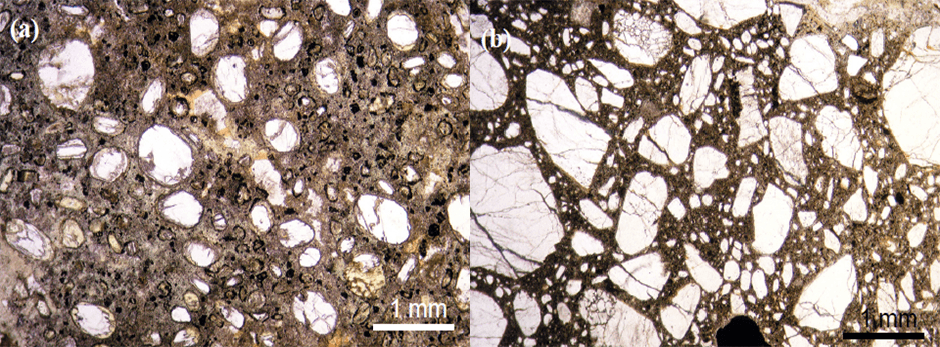The Misery kimberlite complex forms part of the Lac de Gras kimberlite province on the Slave Craton in the Northwest Territories of Canada. It was emplaced at approximately 56 Ma at the contact between biotite schist and granite when the area was overlain by poorly consolidated mudstones and shale. Misery was mined from 2001 to 2005 by open cut methods, and a pushback expansion was approved in mid-2011. Waste stripping is underway with first ore production expected in 2015. The occurrence is one of the highest grade primary diamond deposits in the world with an average grade of approximately 4 ct/T.
The original geological model of the complex comprised nine bodies, including steep sided pipes infilled with volcaniclastic kimberlite as well as dykes and irregular intrusions of coherent kimberlite. The model was constructed using mining, drill core geology, bulk sampling and indicator mineral composition data. However, while a significant amount of drilling and sampling data were available for the upper portion of the main ore body, the Misery Main Pipe, limited data were available for most of the peripheral bodies and at depth, and hence these were not reliably constrained.
With the expansion of the Misery open pit, it has become important to better determine the morphology, internal geology and grade potential of some of these peripheral bodies, in particular the Southwest Extension (SWE) and South Pipe. Given the location of these bodies with respect to the open pit design, and their weaker rock strength relative to the host rock, they pose a geotechnical risk during mining. These sources also have potential to become feed to the process plant as diamond prices increase, presenting upside to the Misery expansion project.
Thus, between 2007 and 2010 additional delineation and bulk sample drilling was undertaken on the Main Pipe, SWE and South Pipe, and these data form the basis of a revised geological model for the three bodies. It is now apparent that the two peripheral bodies are larger than originally modelled and the relationship with the Main Pipe is complex. Representative indicator mineral and microdiamond samples were taken from these drill holes to help constrain the internal geology and to assess the relative diamond grade potential of the bodies.
This contribution presents a summary of the key results of this work, including an updated geological model, comment on internal variation in petrographic, indicator mineral and microdiamond characteristics, and the significance of these with respect to possible diamond grade variation.

